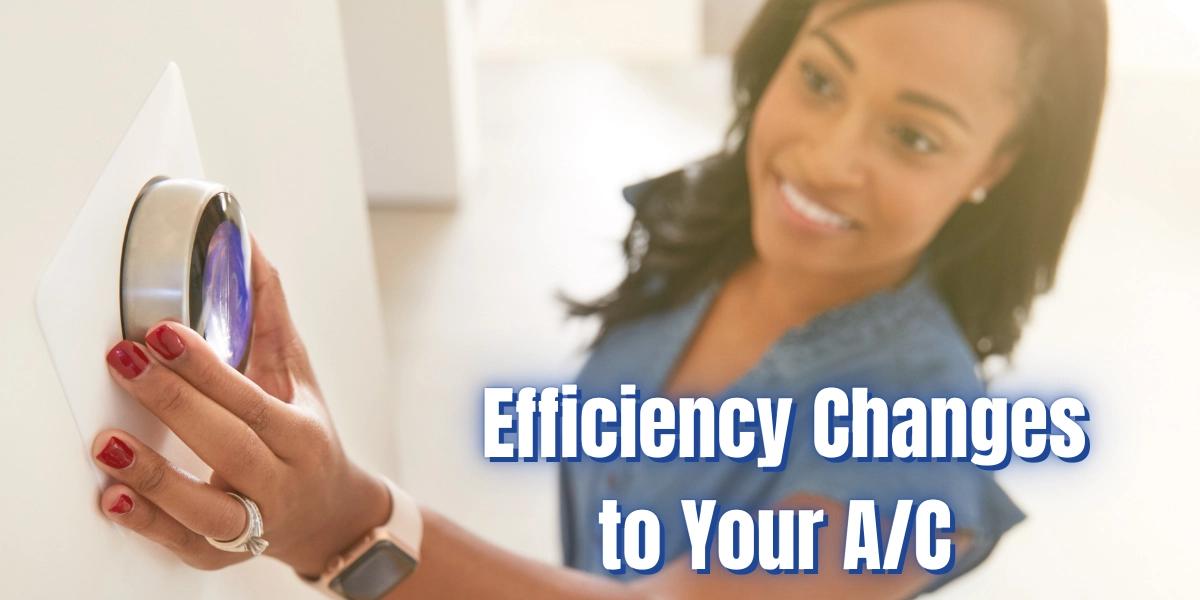2023 HVAC Efficiency Standards: Impact on Springfield, MO
More changes happened to air conditioning and heat pumps this year – changes to federal efficiency standards for air conditioners and heat pumps went into effect on January 1, 2023. This revamp of regulations is a pretty big deal since it's been six years since the US Department of Energy (DOE) last updated its energy policies in accordance with 1975's Energy Policy and Conservation Act. Home builders and HVAC contractors will want to make sure they're prepared as all new units must meet these more efficient requirements - any older models won't be accepted anymore. It’s equally important for any homeowners considering a new air conditioning system or heat pump system to be aware of the new system requirements too.
Air conditioner systems face different efficiency standards depending on geographic region and capacity. Climate zones influence how efficient systems need to be in order to meet regulatory guidelines, often creating unique challenges based on location. Those of us in the Show-me state fall into the northern region.
And it gets even more complicated… on top of efficiency changes so has the system's efficiency designation. SEER and EER are now being replaced with SEER2 and EER2 to reflect a more up-to-date approach for HVAC units. The new and improved testing procedure is now defined by DOE Appendix M1. Recognized as SEER2, EER2, and HSPF2 ratings - these updated tests generate external static pressures that are up to five times higher than the previous Appendix M test procedure. The goal is to maximize the performance of your HVAC units with this enhanced rating M1 system.
So to break all that down, with the old testing standards (M), air conditioners in the North must now have a minimum efficiency of 14.0 SEER and 15.0 for those located in southern regions - elevating performance levels to keep up with growing temperature demands. However, using the new testing standards (M1), the SEER2 ratings will actually be lowered to 13.4 and minimum efficiencies reduced. Here’s the good news, at least for our region; any 13 SEER (old M standard) that was built prior to January 1, 2023, can still be installed after that date, you just won’t see any more manufactured. Unfortunately for other regions, the same cannot be said. It’s good to live in Missouri!
The standards on split system heat pumps will increase evenly across all regions following national standards, not a regional differentiation. Using the old testing method (M), the new minimum efficiency standards for heat pumps have been raised from 14.0 SEER to 15.0 SEER and 8.8 HSPF (Heating Seasonal Performance Factor) performance to be achieved by split-system heat pumps in order to keep pace with industry expectations. Utilizing the new testing method (M1) requires 14.3 SEER2 and 7.5 HSPF2 ratings to meet DOE standards. As with our region air conditioners, and heat pumps built before January 1, 2023, can still be installed on or after that date, but again you won’t see any heat pumps manufactured under old specs after that date. To top everything off, all these shifts in test procedures necessitate changes in airflow set points on indoor blowers, like fan coils and furnaces.
All clear as mud, right?! At the end of the day, just call our experts at SS&B Heating and Cooling. We keep up with these changes, so you don’t have to worry about getting something installed that shouldn’t be. Knowing the ins and outs of these HVAC efficiency changes, along with the additional refrigerant change for air conditioners, are just a couple examples of how our team always stays up to date with continuing education and training. To see more on the changes to air conditioning refrigerant click here.
Frequently Asked Questions
How Long Can I Expect My HVAC System to Last?
Can HVAC Cause Carbon Monoxide?
Is it Bad for My Central Air Conditioning to Run Constantly?

